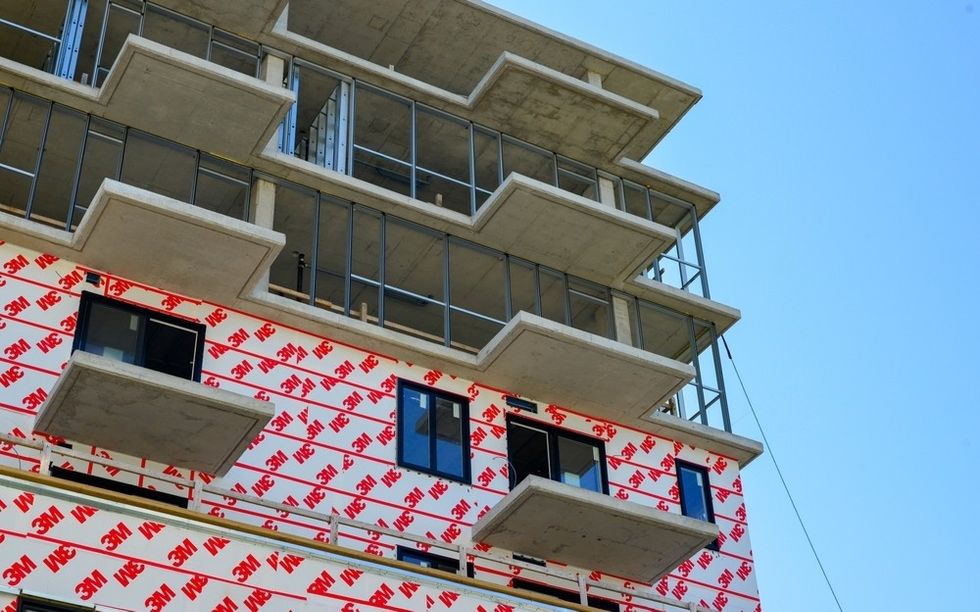In a move touted by the Canadian government as one that will put homeownership within reach for Millennials and Gen Z, 30-year amortization periods for insured mortgages officially go into effect today (August 1). Before those in the dark get too excited about this, however, there are stipulations: the 30-year mortgage amortizations only apply to insured first-time homebuyers who are purchasing new builds.
Extending mortgages by five years from the standard term of 25 years will make monthly mortgage payments a little easier on the bank account, says the federal government. The initiative is part of the strengthened Canadian Mortgage Charter and was announced in Budget 2024 back in April.
“For every young Canadian who wants to own a home of their own, we want them to be able to qualify for a mortgage and afford their first home,” said Freeland in a statement. “One of the biggest hurdles to homeownership for younger Canadians is qualifying for a mortgage and affording the monthly payments. That is why, starting August 1, first-time buyers of new builds will be able to reduce their monthly payments with up to 30-year mortgages. This is just one of the many new measures our government is taking to make the dream of homeownership a reality for younger Canadians.”
But just who will experience this reality? Likely, not those in pricey markets like the Greater Toronto Area (GTA) or in Vancouver where this said “Great Canadian Dream” of homeownership is all but dead for the younger generation (or, at least, it's on life support).

Equalizing Mortgage Access (For Those Who Qualify)
The Canadian Homebuilders’ Association (CHBA) celebrates the move and says that the new 30-year mortgage amortization periods are a way to tackle growing inequalities in mortgage access for young Canadians.
“Canadians still deeply want to own their own homes, and the introduction of 30-year amortization periods on insured mortgages for first-time buyers on new construction homes is a game-changer for those who are well-qualified but have been knocked out of buying a home due to ever-tightening mortgage rules,” a rep from the CHBA tells STOREYS. “These new rules are a big step in providing long-term assistance to first-time buyers and stymieing the downtrend in homeownership rates. They also help address growing inequities in mortgage access, especially for those who cannot rely on the ‘bank of mom and dad.’”
Further, CHBA tells STOREYS that the new rules equalize the loan options between insured and uninsured paths to ownership. “This targets younger buyers that have a greater potential to see their incomes rise over the repayment period,” says the CHBA.

A Niche Market
Despite efforts to target more equality, the new rules have been criticized for being too restrictive to have a notable impact in Canada’s pricier cities. It only applies to insured mortgages; a mortgage may only be insured by the Canadian Mortgage and Housing Corporation if a buyer put less than 20% down on the home upfront and if the property’s purchase price was less than $1M.
“This benefits a very small, niche subset of the market,” says Toronto mortgage broker Mitch Mannella. “For example, in Toronto, a new construction is likely going to be over a million dollars to purchase, so these buyers wouldn't even qualify for the program; $1m+ properties require 20% down and can't be insured, so it doesn't fit program.”
In cities like Toronto and Vancouver, aging starter homes come with a $1M+ price tag, and they’re a far cry from sleek and shiny new builds.
“It could have gone further in terms of helping first-time buyers, particularly in places like the GTA, where average home prices hover around the $1M mark,” Karen Yolevski, COO of Royal LePage Real Estate Services Ltd. tells STOREYS. “Pre-construction and new construction homes represents just one segment of the market. But first-time buyers looking, for example, at a resale condominium that is likely less than $1M and can be insured, can’t get this amortization period. It’s welcome that any action is taken to help affordability for first-time buyers, however, if more segments of the market were available them, and they were able to benefit from a 30-year amortization on more types of properties, that would likely help more people.”
Mannella says that first-time homebuyers from smaller cities and towns outside of the notoriously pricey Greater Toronto Area (GTA) could be enticed by the new 30-year amortizations. When he breaks down the math, however, the results aren’t exactly worthy of too much excitement.
“In these regions, this will perhaps offer about 5% more borrowing power and save about 5% payment per month,” says Mannella. “For example, if you purchased a $750,000 property and put 15% down payment ($112,500), the difference on your mortgage payment between a 25- and 30-year amortization would be $300/month ($3700 vs $3400 if the rate was 4.99%). But your $637,500 would then have a further $17,850 add-on for CMHC mortgage insurance, so a total mortgage balance of $655,350. In almost any case, you'd be better off putting 20% downpayment instead, if that is possible (gift from family, save up more money) and amortize over 25 years.”
No "Game Changer," Experts Say
Toronto mortgage broker and commentator Ron Butler says that the Canadian government is making “widely too big of a deal” of the new rules. “Our calculations suggest only 6% of hi-ratios buyers may ever use this program,” says Butler. “It’s highly unlikely that this will be widely adopted by young, first-time homebuyers. In Ontario and British Columbia, standard deposits on new construction are now 15% and 20%, so there’s no real aid to first-time homebuyers in terms of affordability.”
While the headlines may have piqued the interest of curious young homebuyers – and would-be homebuyers – it’s safe to say the availability of 30-year amortization periods won’t result in a countrywide adoption.
“I've had a few inquiries, but once I explain that it only pertains to new construction they quickly see that it won't be very useful to them,” says Mannella. “New construction demands a much higher price per square foot, so any cost savings would quickly be negated. These buyers are not typically the ones purchasing new construction and if they are in a position to do so, they can also likely afford a larger down payment (20%+) which will alleviate the need for the CMHC mortgage insurance and a lengthier amortization period.”
So, for Mannella’s Toronto-based, first-time homebuyer clients, the new rules will provide little to no relief, despite the splashy headlines celebrating the move.

Enough to Spur Housing Starts?
Proponents say the new rules will inspire the creation of much-needed housing supply. “These new rules will go a long way to enable the residential construction sector to respond to the government's goal of getting 5.8 million new homes built over the next decade,” says the CHBA. “Put simply, if buyers cannot get a mortgage to buy a home, then builders cannot build. That’s why enabling first-time buyers of new homes to enter the market is critical for getting more supply built. This is needed now, to help turn the market around, and will need to continue for many years to come if Canada is to work towards doubling housing starts.”
Others aren’t too convinced and say that the new 30-year mortgage amortizations will have a minimal impact on Canadian housing starts at a time when countless projects are currently on hold due to hight supply costs, heightened interest rates, and climbing development fees (the later of which quietly increased in Toronto on June 6). “Today’s housing starts are being held back by a deteriorating economy even more so than high rates,” says Butler.
Mannella agrees. “I don't see this as a driver of more construction, since first-time homebuyers aren't the ones purchasing new builds, typically,” says Mannella. “So, based on the minimal new construction that may come out of this, I don't see any direct correlation between housing affordability and this program.”
Yolevski, however, remains optimistic (for the time being) that the initiative could have a positive impact on new supply in smaller markets where properties are less expensive.
“Provided the units can be priced at an insurable price [under $1M], it may spur some activity,” says Yolevski. “You may see builders who are targeting this market and building some new supply to the market with this in mind. That would be great to see, because we are going to need more supply in the market. There’s a lot of talk right now about how condominium building has cooled right off and that’s going to create a larger supply issue in future years. If builders are able to make the math work and take advantage of this, this would be positive in terms of building new supply, but that remains to be seen.”
CHBA, says the focus on new construction was a sound and strategic one. The big question remains whether the program will expand in scope in the future.
“The focus on new supply is designed to help first-time buyers enter the market without impacting demand and prices in the existing housing market, while still spurring new housing starts,” says the CHBA. “The rental market should also see some relief, as it will enable many Canadians to leave their rental units and become homeowners, in turn, spurring new construction. CHBA would like to see expansion of this to include all insured mortgages on new construction. This will enable move-up buyers who still need insured mortgages to vacate their entry-level homes and move on to their next newly built home, encouraging more housing supply.”
Indeed, it sounds nice in theory. Whether young Canadians in smaller cities jump on board will remain to be seen, as will any potential impact on housing affordability. “It will be interesting to see if this does provide some relief, and if so, whether the government expands on the program,” says Yolevski.





















